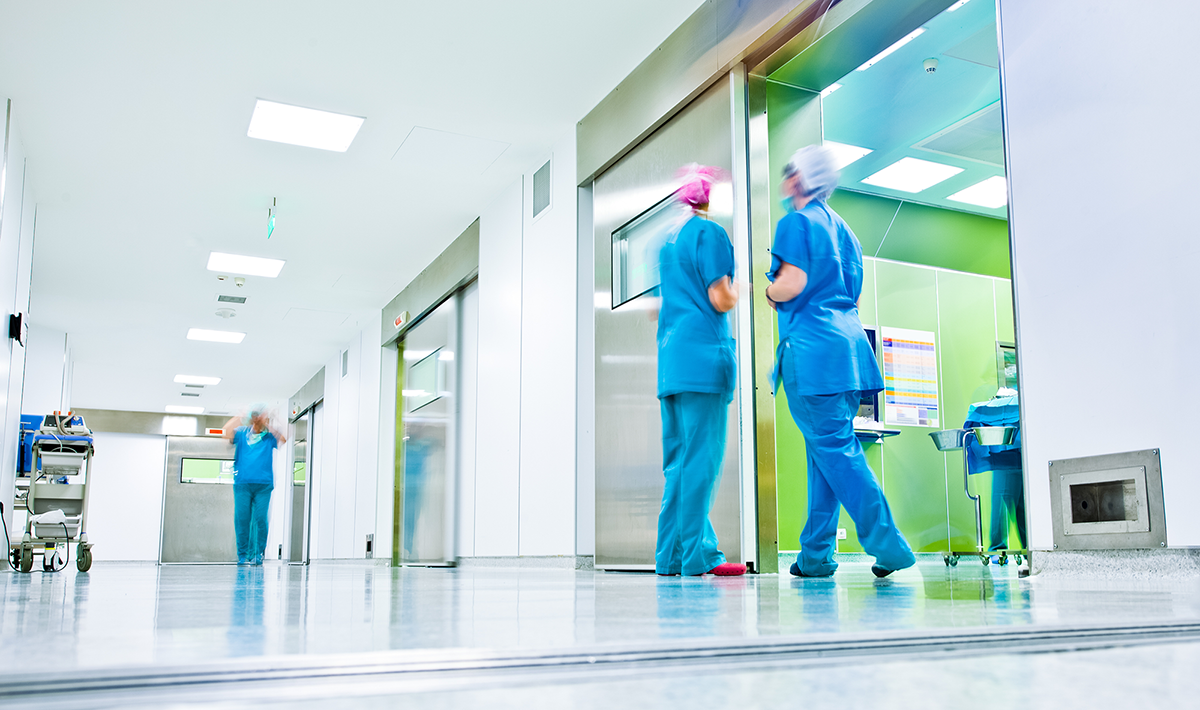OCCU-TEC's Negative Pressure Enclosure Testing at a Large Regional Teaching Hospital

Situation
Testing a COVID-19 Protective Enclosure for Surgical Procedures
OCCU-TEC was contracted by a large regional teaching hospital in the Midwest to provide testing services for a unique surgical apparatus developed during the COVID-19 pandemic. This apparatus aimed to mitigate the risk of exposure for surgeons during surgical procedures. Given the unreliable nature of COVID-19 testing at the time, there was significant concern about potential exposure under normal operating conditions.
In response, a group of doctors and professors designed a negative pressure enclosure to surround the patient's head. This device utilized existing equipment in the surgical unit to create negative pressure, in an effort to prevent airborne viral cells from exiting the enclosure and potentially infecting surgical staff. OCCU-TEC, in collaboration with the client, devised a sampling strategy to measure standard comfort parameters, particulate readings, and differential pressure inside and outside the negative pressure enclosure. This data was critical to determining the efficacy of the device to obtain emergency authorization from the FDA.
Challenges
COVID-19 Transmission Risk and Innovating Safety
The client faced several significant challenges, including:
- Pandemic Environment: The hospital was inundated with severely ill patients, overworked staff and instances of staff illness, creating a chaotic and high-risk environment.
- Exploring Negative Pressure Enclosures: The project team embarked on designing and developing small-scale negative pressure enclosures for the first time.
- Resource Constraints: Hospital resources were stretched thin, and staff availability for testing was limited.
During the height of the COVID-19 pandemic, the surgical team was deeply concerned about their exposure risk during procedures. With patients often not showing symptoms or testing negative despite being infected, the risk of transmission remained high. The negative pressure enclosure aimed to address this issue by ensuring that air could only flow into the enclosure from outside, preventing any viral particles from escaping into the operating room.
OCCU-TEC’s Solutions
OCCU-TEC’s Enclosure Testing Protocol
OCCU-TEC addressed these challenges by:
- Responsive Testing Schedule: OCCU-TEC was able to conduct testing on short notice, accommodating the hospital staff's limited availability.
- Robust Testing Strategy: OCCU-TEC developed a reliable testing strategy to gather necessary data for FDA emergency authorization.
- Design Recommendations: When initial tests indicated failure, OCCU-TEC provided actionable design recommendations, enabling the team to refine and improve the prototype.
The project team initially contacted OCCU-TEC to develop a reliable testing protocol. OCCU-TEC proposed using indoor air quality monitors to measure parameters such as temperature, relative humidity, carbon dioxide and carbon monoxide levels inside and outside the enclosure. Additionally, a manometer was used to ensure the enclosure maintained negative pressure.
The first tests revealed that the enclosure did not maintain negative pressure as expected. OCCU-TEC identified several design flaws, such as inadequate sealing around the patient's neck and the need for a more rigid structure to withstand the suction pressure. They also advised on creating access points for surgical tools without compromising the enclosure's integrity, drawing parallels to sandblasting gloves used in sealed containers.
Despite the initial setbacks, the collaborative effort led to significant design improvements. The final prototype, based on OCCU-TEC's testing results and recommendations, achieved the desired negative pressure, demonstrating its potential effectiveness in protecting surgical staff.
Technical Highlights
Challenges and Innovations in Pandemic-Era Enclosure Testing
Chaotic Pandemic Environment
Conducting tests in a hospital overwhelmed by the pandemic required careful coordination and flexibility to ensure safety and efficacy.
Enclosure Size and Data Collection
The unique size of the negative pressure enclosure posed challenges for data collection, requiring innovative solutions to obtain accurate measurements.
Time Sensitivity
Rapid testing and feedback were crucial to allow the team to iterate and achieve a functional prototype quickly.
Results
OCCU-TEC Success With Teaching Hospital Collaboration
OCCU-TEC's efforts resulted in a prototype that achieved a level of negative pressure deemed effective in protecting surgical staff from potential viral exposure. This development provided the hospital with a critical tool to enhance safety during surgeries, addressing both internal staff concerns and external patient safety.
The project was inherently unique due to its development in response to an unprecedented global pandemic. The collaboration between OCCU-TEC and the teaching hospital highlighted the importance of adaptability, innovative problem-solving and rigorous testing under challenging conditions.
OCCU-TEC's collaboration with this academic medical center demonstrated the company's capability to provide critical testing and design support in a high-stakes, time-sensitive environment. The successful development of a negative pressure enclosure during the COVID-19 pandemic underscores OCCU-TEC's expertise and commitment to enhancing healthcare safety through innovative solutions.
Share this article:



